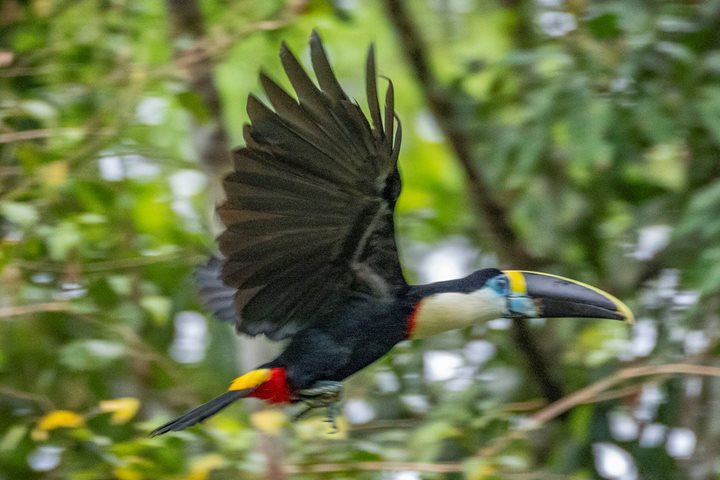You will hear more than you will ever see in the tropical rainforest, and you see an incredible amount. The cacophony of sounds starts with the approach of the conductor, the sun. With a 6:00 a.m. skiff excursion, we started up the Zapote River. The thrush-like wren sounded off a staccato car alarm, while a blue morpho butterfly fluttered silently by, a winged cobalt laser show. In contrast to the wren was the mournful woo-coo of a white-tipped dove. The buff-breasted wren was in competition in the noisy car alarm realm, and as festive parrots flew over they too squawked their morning chatter. The black-collared hawk has earned the nickname of “grandma” bird as it gives a tight-throated whine of boredom or disapproval. Two sightings of three-toed sloths left us oohing and ahhing from our skiff vantage point. The strong descending whistle of the saddleback tamarins brought our attention to a clump of trees where tamarins and a few squirrel monkeys started to jump from branch to branch amongst the thick foliage.
The chorus for the late afternoon changed. Undulated tinamou, locally known as the jungle chicken, gave three long monotone notes ending with a fourth note raising a slight octave higher. The buzzing cicadas so vocal in the heat of the day traded shifts with the trill of katydids and crickets. Flycatchers lined the riverside calling their namesake of “Victor Diaz,” another local name affectionately given to the great kiskadees.
As the sun set our naturalist stopped the skiff, turned off the engine and we finished the jungle symphony with baritone horned screamers, the hoarse cackle-purring of the greater ani, and the last rattles of the ringed kingfishers.
We have seen more than we possibly could have imagined this week, but that is not the only sense we possess that has been delighted during our week of discovery in the Amazon basin.







